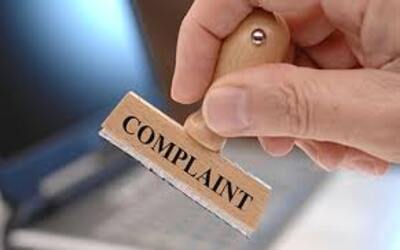
What is ISO 13485?
ISO 13485 is the most frequently used international standard for quality management in the medical device industry. The ISO 13485 standard, published by the International Organization for Standardization (ISO), is a useful tool for meeting the entire requirements for a Quality Management System in the medical device business.
What is the purpose of ISO 13485?
Adopting ISO 13485 gives manufacturers a realistic foundation for addressing the EU Medical Device Directive (MDD), the EU Medical Device Regulation (MDR), and other legislation, as well as demonstrating a commitment to medical device safety and quality.
You'll need to start generating documentation, such as the Quality Policy, Quality Objectives, and Quality Manual, with management assistance and determining customer requirements for the QMS. Together, they establish the Quality Management System's entire scope and implementation. Along with them, you'll need to develop the obligatory and optional processes and procedures that your company will need to generate and deliver your product or service properly.
What are the requirements of ISO 13485?
ISO 13485:2016 lays out the requirements for a Quality Management System that produces ISO medical devices and related services that consistently fulfil customer and regulatory requirements. Except when otherwise stated, the requirements of ISO 13485:2016 apply to all companies, regardless of their size or kind. Where criteria are stated to relate to medical equipment, the rules also apply to the organization's connected services.
The ISO 13485 structure is divided into eight sections, the first three of which are introductory and the last five of which contain the Quality Management System's obligatory standards. Here's what each of the five major sections is about:
Section 4: Quality Management System – This section covers general QMS requirements as well as the standard's documentation requirements. The requirements for the Quality Manual, Control of Documents, and Control of Records, all of which are required documents in the QMS, are all included.
Section 5: Management Responsibility – Top management must be involved in the implementation and maintenance of the QMS, according to the management responsibility criteria. In addition to planning for the QMS, top management must be involved in the system's continuing assessment to assure customer satisfaction and improvement.
Section 6: Resource Management – The section on resource management is brief, but it emphasises the importance of maintaining control over all resources, including human resources, buildings, infrastructure, and the working environment.
Section 7: Product Realization – The product requirements cover all areas of the product or service's planning and creation. Planning, product requirements review, design, purchasing, generating the product or service, and controlling the equipment required to monitor and measure the product or service are all covered in this part. If the requirements in a section are not applicable to the company, ISO 13485 enables them to be excluded (such as a company that does not design products or services).
Section 8: Measurement, Analysis and Improvement – This section contains the requirements for ensuring that you can monitor whether your QMS is working properly. Customer satisfaction surveys, internal audits, product and process monitoring, dealing with non-conforming items, and corrective and preventive actions are all part of it.
Why was ISO 13485 revised?
All ISO standards are reviewed and changed on a regular basis to ensure that they remain market-relevant. The latest QMS practises are reflected in ISO 13485:2016, which reflects the growth of medical device technology as well as changes in regulatory requirements and expectations. This assures that the standard is compatible with other management system standards, such as ISO 9001's new edition.
FDA and ISO Standards for Medical Devices
Medical device makers must build and maintain quality systems in order to ensure that their products consistently fulfil applicable regulations and specifications, according to the Food and Drug Administration (FDA). Current good manufacturing practises (CGMPs) are the quality system regulations (QSR) for FDA-regulated products (CGMP). The Federal Food, Drug, and Cosmetic Act, as well as section 21 part 820 of the Code of Federal Regulations, were the first to establish these regulations in 1978. (21 CFR part 820).
These restrictions have mostly focused on the manufacturing of medical devices for almost a decade. The Safe Medical Devices Act of 1990, which includes product design regulations, changed this. Simultaneously, the FDA worked to align the CGMP requirements with relevant international standards. The key standards were ISO 9001:1994* and 13485:1996 from the International Organization for Standards (ISO).
'Quality Systems - Model for Quality Assurance in Design, Development, Production, Installation, and Servicing' was the title of the ISO 9001 standard. 'Quality Systems – Medical Devices – Supplementary Requirements to ISO 9001' was the title of the ISO 13485 standard. 13485 contains the requirements that medical device manufacturers must implement into their management systems, whereas ISO 9001 stresses continuous improvement and customer satisfaction. Maintaining effective procedures while meeting legal standards, customer expectations, and risk management are just a few of them.
A manufacturer that is ISO 13485 certified does not automatically meet FDA regulatory criteria. This accreditation, on the other hand, connects the company's management systems with the FDA's QSR and worldwide regulatory criteria. As a result, 13485 provides a management system that may be used to ensure that various regulatory and customer requirements are met.
ISO 13485 certification does not meet the requirements of ISO 9001, nor does it imply that it is equivalent to or capable of replacing any country-specific requirement for medical device makers. Being both 9001 and 13485 certified has advantages, as 9001 focuses on business elements that 13485 does not, and both are beneficial to all businesses. Furthermore, ISO 13485 is no longer regarded as a standard that only applies to completed medical device makers. Many manufacturers are requesting ISO 13485 certification from their sub-tier suppliers as well.
* ISO standard nomenclature includes the standard identification number, followed by the year of implementation. The current standards are ISO 9001:2015 and 13459:2016.
Sources:
www.fda.gov






